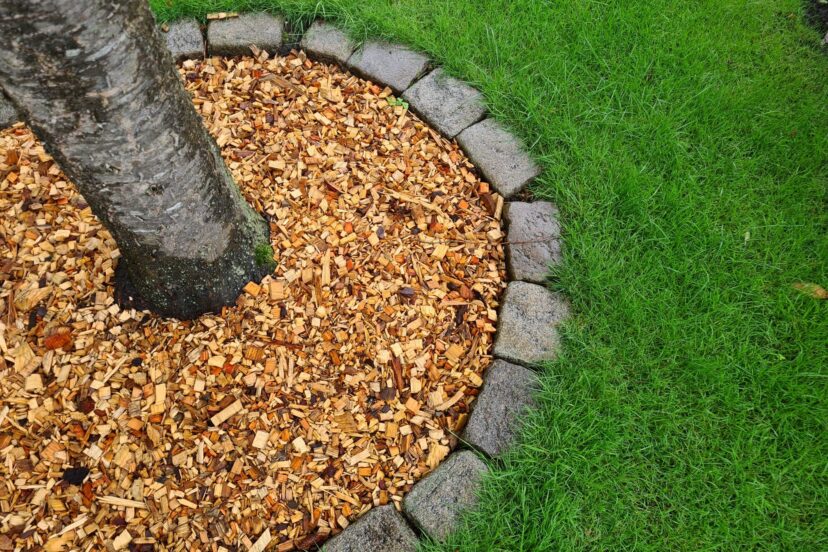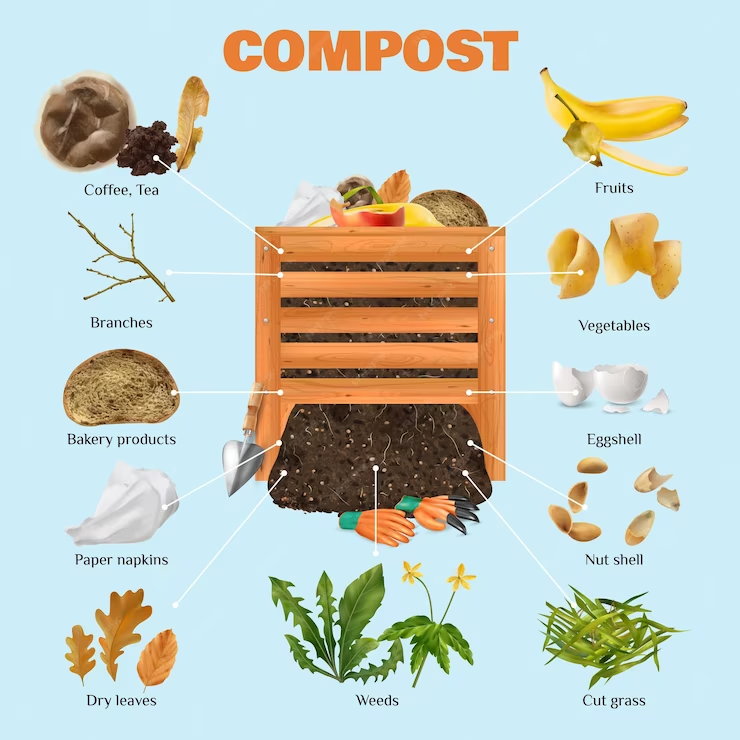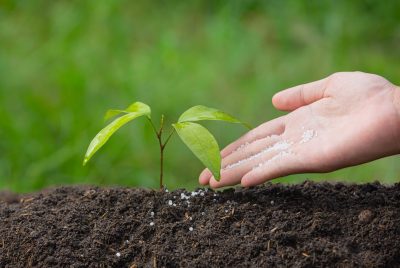Mulching Practices for Healthier Garden Soil and Higher Yield
Transform your garden into a bountiful oasis by harnessing the power of mulching. Whether you’re a seasoned gardener or just starting out, understanding the secrets of mulching can significantly boost your crop production and create healthier soils. In this article, we will explore what mulching is, the benefit of mulching, the different types of materials you can use, how to choose the right mulch for your needs and how to apply mulch correctly. By the end of this piece, you will have the knowledge to maximize the potential of your garden and turn it into a thriving, sustainable ecosystem.
What is Mulching?
Mulching serves as a vital practice in gardening, offering a multitude of benefits to both plants and soil. It is a gardening technique where a layer of organic or inorganic material is spread over the soil surface around plants.
In agricultural history, various civilizations used mulching techniques to conserve soil moisture, suppress weeds, and improve soil fertility. Indigenous cultures around the world employed organic materials such as straw, leaves, and grasses to protect their crops and promote healthy growth.
Different types of mulching materials
There are a variety of materials that can be used for mulching, each offering unique benefits for your garden. Here we summarise the most commonly used organic and inorganic mulches. Each type has its own set of benefits and considerations:
Organic Mulching Materials:
- Straw: Straw is a popular organic mulch, often used to retain moisture and suppress weeds. It’s lightweight and breaks down slowly.
- Wood Chips/Bark: These are commonly used for decorative mulching around trees and shrubs. They break down slowly, adding organic matter to the soil.
- Leaves: Shredded leaves make an excellent mulch, providing nutrients as they decompose. They are especially beneficial for improving soil structure.
- Grass Clippings: Fresh or dried grass clippings can be used as mulch. They decompose quickly and add nitrogen to the soil.
- Compost: Well-rotted compost is a nutrient-rich mulching option. It improves soil fertility and structure.
- Pine Straw (Needles): Pine straw is often used in landscaping, particularly in areas where it’s abundant. It’s slow to decompose and provides good coverage.
- Newspaper/Cardboard: These are used as a weed barrier when placed on the soil surface and covered with other mulch. They break down over time.
Inorganic Mulching Materials:
- Plastic Mulch: Plastic sheets or films can suppress weeds and conserve moisture. They are often clear or colored and mostly used in agriculture.
- Rubber Mulch: Made from recycled tires, rubber mulch is durable and doesn’t decompose. This is mainly used in playgrounds and landscaping.
- Landscape Fabric: This woven fabric allows water and air to pass through but helps suppress weed growth. It’s often used under other types of mulch.
- Stones/Pebbles: Decorative stones or pebbles are non-organic mulch, particularly in arid regions. They don’t break down but can absorb and retain heat.
- Geotextiles: These permeable fabrics are used against erosion control and weed suppression. They allow water and air to pass through while preventing weed growth.
The choice of mulching material depends on factors such as the specific needs of the plants, local climate, aesthetics, and the purpose of mulching (e.g., moisture retention, weed control, or soil improvement).
Choosing the Right Mulch Materials
When it comes to choosing the right mulch materials for your garden, it’s important to consider the specific needs of your plants and the environment they are growing in. Here are some factors that can guide you to choosing the right mulch materials for your garden.
- Purpose: Determine the primary goals of mulching in your garden. Are you mainly looking to retain moisture, suppress weeds, improve soil fertility, or enhance the aesthetic appeal? Different mulch materials excel in different areas, so choose one that aligns with your priorities.
- Climate: Consider your local climate conditions, including temperature fluctuations, rainfall patterns, and humidity levels. Some mulch materials may perform better than others in certain climates. For example, in hot and dry climates, mulches that retain moisture well, such as organic materials like compost or bark, may be preferable.
- Soil Type: Evaluate the composition and texture of your soil. Organic mulches like compost, leaves, and grass clippings can improve soil structure and fertility over time, especially in clay soils. In contrast, inorganic mulches like plastic or gravel may be more suitable for sandy soils, as they help conserve moisture and prevent erosion.
- Plant Needs: Consider the specific requirements and preferences of the plants in your garden. Some plants may thrive with certain types of mulch, while others may be sensitive to certain materials. For example, acid-loving plants like azaleas and blueberries benefit from mulches like pine needles or wood chips, which gradually acidify the soil as they decompose.
- Cost and Availability: Evaluate the cost and availability of different mulch materials in your area. While some materials may be more affordable or readily available, others may require more effort or expense to obtain. Consider factors such as transportation, installation, and long-term maintenance costs.
- Aesthetic Preferences: Choose a mulch material that complements the overall aesthetic of your garden and landscape design. Some materials, such as decorative bark or colored mulches, can enhance the visual appeal of your garden beds and pathways.
Applying Mulch Correctly
Properly applying mulch to your garden is essential for maximizing its benefits. To ensure that your plants receive the full advantages of mulch, it is crucial to spread it evenly and at the right depth. Applying a layer of mulch that is too thin may not provide enough protection for your plants, while a layer that is too thick can suffocate them. Additionally, be mindful of leaving a gap between the base of your plants and the mulch to prevent moisture-related issues such as rot. By applying mulch correctly, you can create an optimal environment for your crops to thrive, resulting in healthier and more productive plants. Ultimately, proper application of mulch sets the stage for reaping the many benefits it has to offer.
Here’s a step-by-step guide to applying mulch properly:
- Prepare the area: Before mulching, weed the area thoroughly to remove any existing weeds. It’s also a good idea to water the soil if it’s dry, as moist soil will help the mulch settle better.
- Choose the right mulch: Select the appropriate type of mulch based on your gardening needs, climate, soil type, and plant preferences.
- Calculate the quantity: Determine the amount of mulch needed to cover the area to the desired depth. Typically, you’ll want to apply mulch at a depth of 2-4 inches (5-10 cm), but this may vary depending on the type of mulch and your specific requirements.
- Spread the mulch: Evenly distribute the mulch over the soil surface, making sure to maintain a consistent thickness. Avoid piling mulch directly against the stems or trunks of plants, as this can promote moisture buildup and encourage pests and diseases. Leave a small gap (a few inches) between the mulch and the base of plants to allow for air circulation.
- Smooth and level: Once you spread the mulch over your desired area, use a rake or garden fork to smooth and level it. This will ensure an even coverage across the entire area.
- Water the mulch: After applying mulch, lightly water the area to help settle the mulch and encourage it to bond with the soil. This will also help prevent the mulch from blowing away in windy conditions.
- Monitor and replenish: Over time, organic mulches will decompose and settle, so it’s important to monitor the mulch layer periodically and replenish it as needed to maintain the desired thickness. Additionally, remove any weeds that may emerge through the mulch to prevent them from competing with your plants.
By following these steps, you can apply mulch correctly to enhance soil health, conserve moisture, suppress weeds, and promote the growth and vitality of your garden plants.
How Mulching Practices can improve yield?
Incorporating the right mulching techniques into your garden can make a world of difference in your crop production. By selecting the appropriate materials, applying them correctly, and understanding how to tailor your approach to different crops, you can create a more sustainable and bountiful garden.
Moisture retention: Mulch helps to retain soil moisture by reducing evaporation from the soil surface. This is particularly beneficial during hot and dry periods when plants may otherwise suffer from water stress. Adequate soil moisture levels promote healthy plant growth, flowering, and fruit development, ultimately leading to higher yields.
Weed suppression: A layer of mulch acts as a physical barrier. This suppresses weed growth by blocking sunlight and inhibiting weed seed germination. By reducing weed competition, mulching allows crops to allocate more resources towards growth and production, leading to increased yields.
Temperature moderation: Mulch acts as an insulating layer. This helps to moderate soil temperatures by keeping the soil cooler in hot weather and warmer in cold weather. Favorable environment for plant root development and function leads to improved nutrient uptake, enhanced photosynthesis, and ultimately higher yields.
Soil improvement: Organic mulches gradually decompose over time. This adds organic matter to the soil and improving its structure, fertility, and microbial activity. Healthy soil supports robust root systems, which in turn facilitate better nutrient absorption and water uptake by plants. Improved soil health contributes to increased crop vigor, resilience to stress, and ultimately higher yields.
Erosion control: Mulch helps to protect the soil surface from erosion by reducing the impact of raindrops and preventing surface runoff. The soil integrity will be maintained and less soil loss from erosion. Therefore, mulching practices help to preserve the root environment and ensure optimal conditions for plant growth and productivity.
Conclusion
Overall, mulching is an effective and sustainable practice that can benefit the health and productivity of garden plants while also conserving water and reducing maintenance needs. By harnessing these benefits, you can promote healthier growth and higher crop yields in your garden. These advantages make mulching a valuable practice for any gardener looking to maximize their crop production and create a thriving garden ecosystem.




